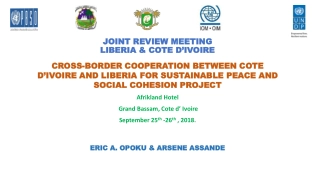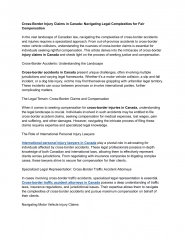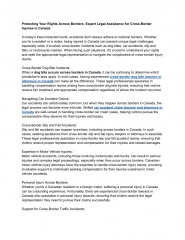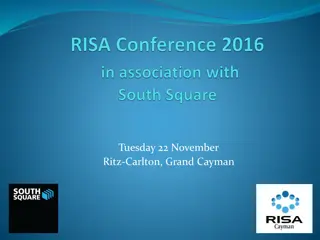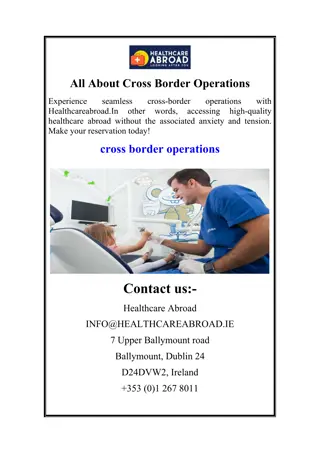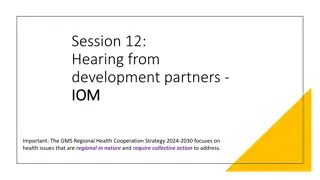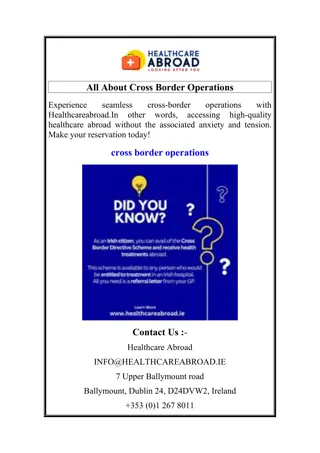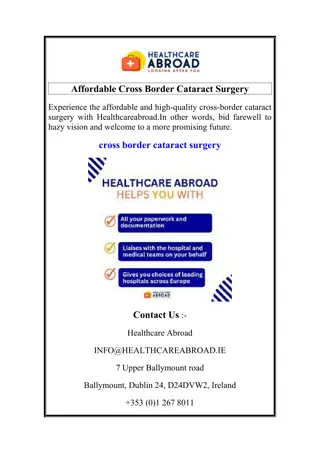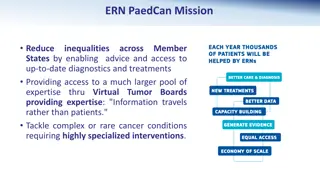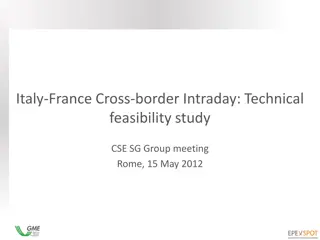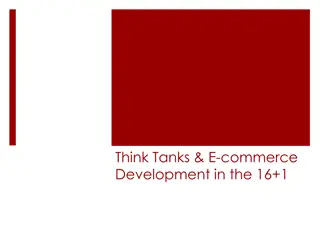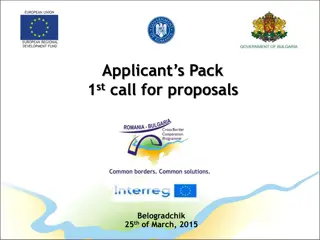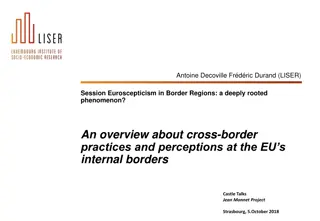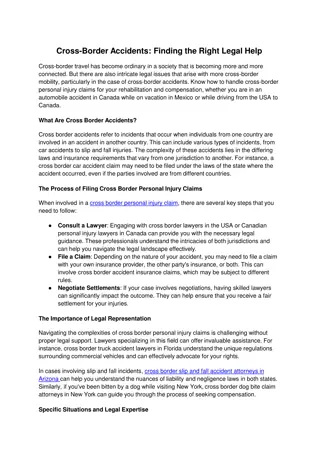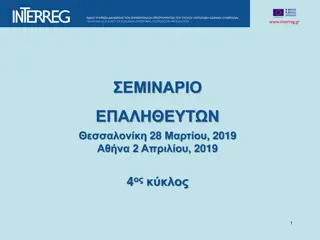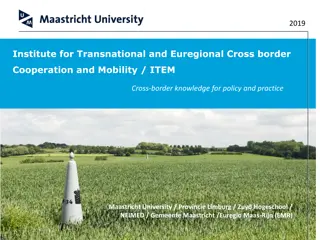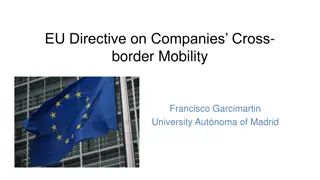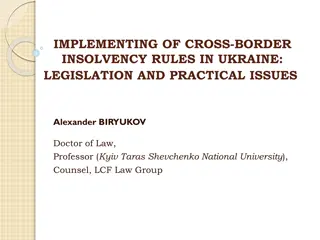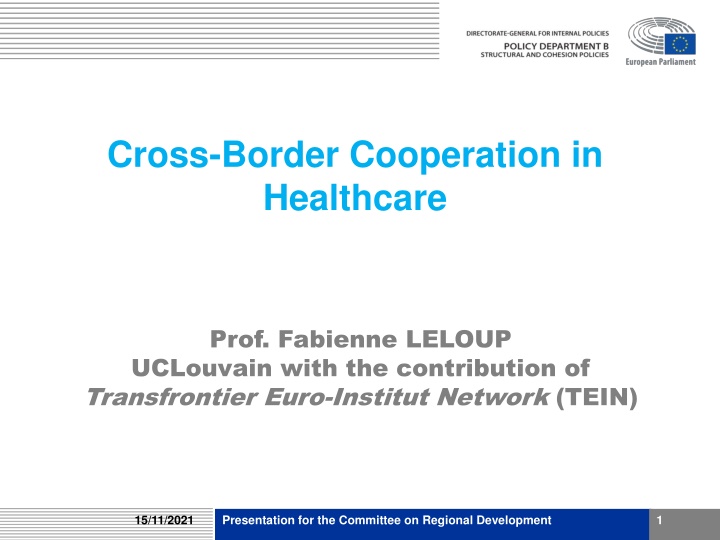
Cross-Border Cooperation in Healthcare: Enhancing Regional Development
This presentation discusses the importance of cross-border cooperation in healthcare within the European context, focusing on patient and healthcare staff mobility, joint services, exchanges, and coordination. It also explores the role of Cohesion Policy, governance challenges, and the impact of COVID-19, providing recommendations for improving healthcare cooperation. The findings highlight the need for specific rules, flexible agreements, and multi-level negotiations to overcome governance barriers.
Download Presentation

Please find below an Image/Link to download the presentation.
The content on the website is provided AS IS for your information and personal use only. It may not be sold, licensed, or shared on other websites without obtaining consent from the author. If you encounter any issues during the download, it is possible that the publisher has removed the file from their server.
You are allowed to download the files provided on this website for personal or commercial use, subject to the condition that they are used lawfully. All files are the property of their respective owners.
The content on the website is provided AS IS for your information and personal use only. It may not be sold, licensed, or shared on other websites without obtaining consent from the author.
E N D
Presentation Transcript
Cross-Border Cooperation in Healthcare Prof. Fabienne LELOUP UCLouvain with the contribution of Transfrontier Euro-Institut Network (TEIN) 15/11/2021 Presentation for the Committee on Regional Development 1
Europe, lets cooperate! 15/11/2021 Presentation for the Committee on Regional Development 2
Structure of the Presentation Structure of the Presentation 1. Background 2. Objectives 3. Methodology 4. Findings 5. Recommendations 15/11/2021 Presentation for the Committee on Regional Development 3
1. Background 1. Background Healthcare A principle of the European Pillar of Social Rights. 37.5% of the E.U. population live in border areas. CBC in healthcare: patient and healthcare staff mobility, joint services, exchanges, coordination and mutual development. 15/11/2021 Presentation for the Committee on Regional Development 4
1. Background 1. Background Art.168 (TFEU). Directive on patients rights in cross-border healthcare (2011/24/EU). Expert groups, committees, EU Health programme and other tools. Primacy of Member States for national health policy, health and social security systems. 15/11/2021 Presentation for the Committee on Regional Development 5
2. Objectives 2. Objectives The role of Cohesion Policy in cross-border cooperation in healthcare. The issue of governance and the persistent obstacles. The impact of the COVID-19 pandemic. Possible solutions and recommendations for improving CBC in healthcare. 15/11/2021 Presentation for the Committee on Regional Development 6
3. Methodology 3. Methodology An analysis of Interreg A B C programmes for the last 3 programming periods. An analysis of 135 healthcare-related Interreg V-A projects. Institutional, academic and grey literature review. Qualitative interviews. 5 case studies: Czech-Polish-Slovak border; Franco-Belgian border; Hospital of Cerdanya; Franco-German border; Euregio Meuse-Rhine. 15/11/2021 Presentation for the Committee on Regional Development 7
4. Findings 4. Findings Limits and Obstacles Cross-bordergovernance: Establishment of specific rules and flexible agreements. Multi-level negotiation and strong commitment of local stakeholders. Cross-border governance in healthcare: A highly regulated sector. Interconnected operators: medical and social institutions, administrative systems, public authorities, insurers and patients. 15/11/2021 Presentation for the Committee on Regional Development 8
4. Findings 4. Findings Limits and Obstacles Barriers to crossing the border: Patient and healthcare staff mobility, information, recognition, perception. Barriers to mutual development: Medical and social organisation, multi-level and multi-actor coordination, long-term and win-win process. 15/11/2021 Presentation for the Committee on Regional Development 9
4. Findings 4. Findings Healthcare and Interreg Increase of number of healthcare projects and concerned cross-border regions in Interreg-programmes Main beneficiaries in Interreg V-A: professionals, patients and healthcare institutions. Main actions in Interreg V-A: training, treatment and diagnosis; equipment, information, campaign and publicity. 15/11/2021 Presentation for the Committee on Regional Development 10
4. Findings 4. Findings Healthcare and cross-border governance Bilateral and multilateral agreements and European coordination: e.g. the agreements on emergency medical care. Minimal coordination with flexible conventions: e.g. the joint health and social protocols among hospitals or institutions. Intermediaries for a collective rulemaking: e.g. organised zones for cross-border access to healthcare, EGTC, health observatories, networks. 15/11/2021 Presentation for the Committee on Regional Development 11
4. Findings 4. Findings The Covid-19 Pandemic: main problems Restrictions in the flows and in the CBC. Asymmetric decisions and absence of local coordination. Missing appropriate information and harmonised data. Mistrust. 15/11/2021 Presentation for the Committee on Regional Development 12
4. Findings 4. Findings The Covid-19 Pandemic: arrangements A plurality of arrangements by local operators and national governments: Task forces, bilateral information, Lobby and local collaboration, Exchange of equipment, transfer of patients and healthcare staff. Coronavirus Response Investment Initiative, CRII+, REACT-EU. 15/11/2021 Presentation for the Committee on Regional Development 13
4. Findings 4. Findings Guidelines for CBC in healthcare Promoting equal access to quality services and developing an important social and economic sector. Promoting green sustainability. Promoting tailor-made solutions and a local approach related to the diversity of CB regions. 15/11/2021 Presentation for the Committee on Regional Development 14
5. Recommendations 5. Recommendations Simplified and diffused information for CB healthcare operators and patients. Cross-border language inside and between CB stakeholders. Comparable CB database and mapping of cross-border and border healthcare operators. Cross-border supply including e-medicine and training. European standard protocols and cross-border routines. Role of intermediaries such as ZOAST, observatories or EGTC. 15/11/2021 Presentation for the Committee on Regional Development 15

